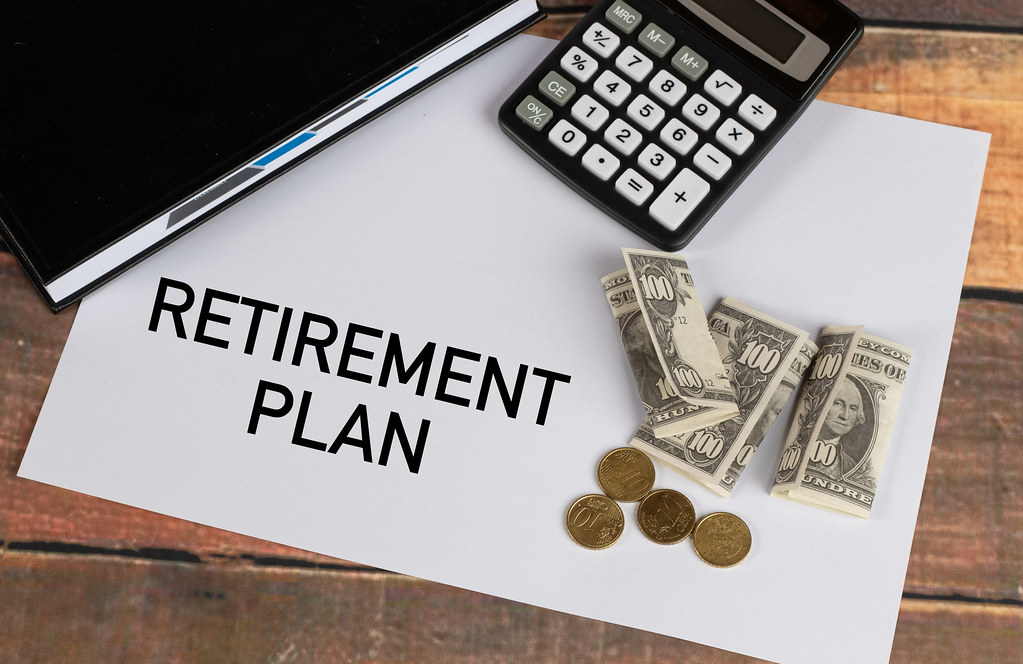There comes a time in many conversations I have, where I can see the nervousness build. When I see that happen, I know exactly what is going on. There is a question about an investment or strategy, but they are afraid to ask it. Maybe it’s out of fear of looking uninformed. Maybe it’s out of fear of the answer itself. Either way, I would like to tell you now, loud and clear: PLEASE ASK ME! I love answering your questions. It’s literally why I do what I do. I want to help people solve problems and put them on a solid financial path. So, in this vein, let me answer a common question, you may be afraid to ask. What differentiates Mutual Funds, Exchange Traded Funds (ETFs), and Hedge Funds? A Mutual Fund is a company. That’s the best way to think about it. That company owns securities, such...
Continue readingWhat are Bond Yields and Why Do They Matter?
Previously, I broke down some of the most common terms associated with bonds and what they mean. But there was one term I left unexplained – and often, it’s the one you hear the most about in the media. I’m referring to a bond’s yield. So, without further ado, let’s answer: Questions You Were Afraid to Ask #9:What are bond yields and why do they matter? Super-quick refresher on four of the terms we defined last time, because they’ll play a role here, too: Par Value: This is the amount that must be returned to the investor when the bond matures – essentially, the original investor’s principal. (Many bonds are issued at a par value of $1,000.) Coupon Rate: This is the bond’s interest rate, paid by the issuer at specific intervals. For instance, let’s say you owned a $1,000 bond with a 10% annual coupon rate. The issuer would...
Continue readingDebt Ceiling Update
On May 1, the Secretary of the Treasury informed Congress that the U.S. could default on its debt by June 1 if legislators do not raise the nation’s debt ceiling.1 This announcement was not a surprise. The U.S. officially hit the debt ceiling in January but were able to stave off any immediate effects through the use of “extraordinary measures.” (These are essentially accounting tools the government can use to pay its bills without authorizing any new debt.) The Secretary’s recent message was to let Congress know those measures are close to being exhausted. Without raising the debt ceiling, the U.S. will not have the money it needs to pay its debts. Should a default actually happen, the economic consequences could be severe. But even if Congress staves off the unthinkable, simply going down to the wire can have negative effects on the markets. To explain why that is, it’s...
Continue readingVolatility Do’s and Dont’s
Between rising interest rates and a recent spate of bank failures, there’s a lot of uncertainty in the economy right now. This, in turn, has brought volatility back to the markets. It’s no surprise, then, that many of my clients, friends, and family have asked me what investors should be doing about it. So, I thought I would write it down: Five Do’s and Don’ts During Times of Market Volatility 1. DON’T panic and make emotional decisions. During times of uncertainty or fear, humans are prone to make decisions based on their “fight or flight” response. Yes, this is even true of our financial decisions! When market volatility strikes, many people make knee-jerk decisions simply so they can feel like they are doing something. So they can feel “in control.” But think about when you’re driving a car, and you see an animal in the road. What happens when...
Continue readingFrustrated Yet?
If you are paying any attention to the news or even just the conversations wafting through the office, you have heard the concerns regarding the world and domestic economy. Inflation is the highest it has been in decades – meaning EVERYTHING costs more – and retirement accounts are being hammered by it all, begging the question… FRUSTRATED YET? If you’re like most investors, the answer is an emphatic YES! But then the real question, especially after the recent market uncertainty and volatility, is “What can you do about it?” While we at the Segrust Group don’t pretend to have all the answers, our clients—people just like you—would tell you that we have enough to take away the frustrations. The good news is, «Salutation», my team and I are here to help our clients navigate the current market environment. (Following is an example of how this letter should be customized for...
Continue readingEaster: A Season for Growth
Happy Easter! As you know, the Eastertime is a very special one for people of varying faiths, cultures, and traditions. One thing that has always fascinated me, though, is how Easter symbolizes growth and renewal. That’s no surprise – this is also the time of year when flowers bloom, hibernating animals emerge, and many species give birth to their young. In fact, in ages past, people actually thought of Easter – and spring in general – as a time for new resolutions and new beginnings instead of the beginning of the calendar year like we do today. Every year, I think it’s fun to celebrate the spirit of the Easter season in a new way. Here are a few of my favorite traditions for this time of year from various places around the world: Cherry Blossom Festival – Japan The significance of the cherry blossom tree in Japan goes...
Continue readingQuestions You Were Afraid to Ask #2: Why is the price of the Dow so much higher than the S&P 500?
I recently started a new series of letters called “Questions You Were Afraid to Ask.” Each month, we will look at a common question that many investors have but feel uncomfortable asking. Because, after all, when it comes to your finances, there’s no such thing as a bad question! In our first letter, we looked at the difference between the Dow, S&P 500, and NASDAQ indices. This month, let’s discuss a related question: Why is the price of the Dow so much higher than the S&P 500? Before we get started, do me a favor. Pick up your phone or go to your computer. Open your internet browser and search for “S&P 500.” The first result will show the current price of the index. Make a note of the number. Next, search for “Dow Jones.” Notice how much higher it is? As in, tens of thousands of dollars...
Continue readingAligning Your Investments with Your Values
110 million employees in the United States have over 8.4 billion collective dollars invested in employer-sponsored retirement plans. In order to attract top millennial and Gen Z talent, many organizations have made a push in recent years to outwardly embrace the causes their employee bases are most passionate about. Lately, however, many have been pointing out a growing disconnect between their employers’ stated values and the assets in their company stock portfolios. Now more than ever, employees (especially younger ones) are personally invested in a number of social, economic, and environmental causes ranging from climate change to gender and racial equality. 401(k) plans, on the other hand, don’t quite seem to be keeping up. Despite the major cultural strides that have been made over the last several years, many 401(k) plans are still heavily invested in firms that are not progressive on the issues today’s employees value the most. Today,...
Continue readingChanging Retirement Plans? 3 Mistakes to Avoid When Rolling Out a New Plan to Employees
A retirement program that helps employees meet their savings goals is an important part of a comprehensive benefits package. At some point, meeting the changing needs of your employees will require you to make changes to your retirement plan offering. However, this process is much easier said than done, as there are many twists and turns along the way that businesses simply don’t anticipate when they set out to offer their employees a better plan. We’re here to save you from making the same mistakes as your peers. Read on to learn three of the most common pitfalls associated with switching retirement plans, and how your business can avoid them when rolling out your new offering. 1. Not accurately estimating your expenses The path to switching your company’s retirement plan is a complex endeavor with lots of components that can really throw you off track if you don’t plan for...
Continue readingStart the New Year Right. Time to Evaluate your Employee Retirement Plan.
The beginning of each new year is the most popular time to make resolutions and usher in positive change in nearly every area of life–coincidentally, it’s also a perfect time to stop and take inventory of what could be improved in your employee retirement plan. With over 51% of employees desiring a retirement plan offering from their employers, it is no secret that retirement benefits are a highly sought-after part of a comprehensive compensation package. However, 2021 data compiled by research organization Matthew Greenwald and Associates revealed that roughly three in four American employees are still worried about their post-career prospects. Topping their list of financial concerns is running out of cash (40%), followed by income loss (18%) and inability to pay for medical expenses (18%). As the retirement planning world becomes progressively more complex, workers are increasingly looking to their employers to help them navigate common obstacles; promisingly enough,...
Continue reading








